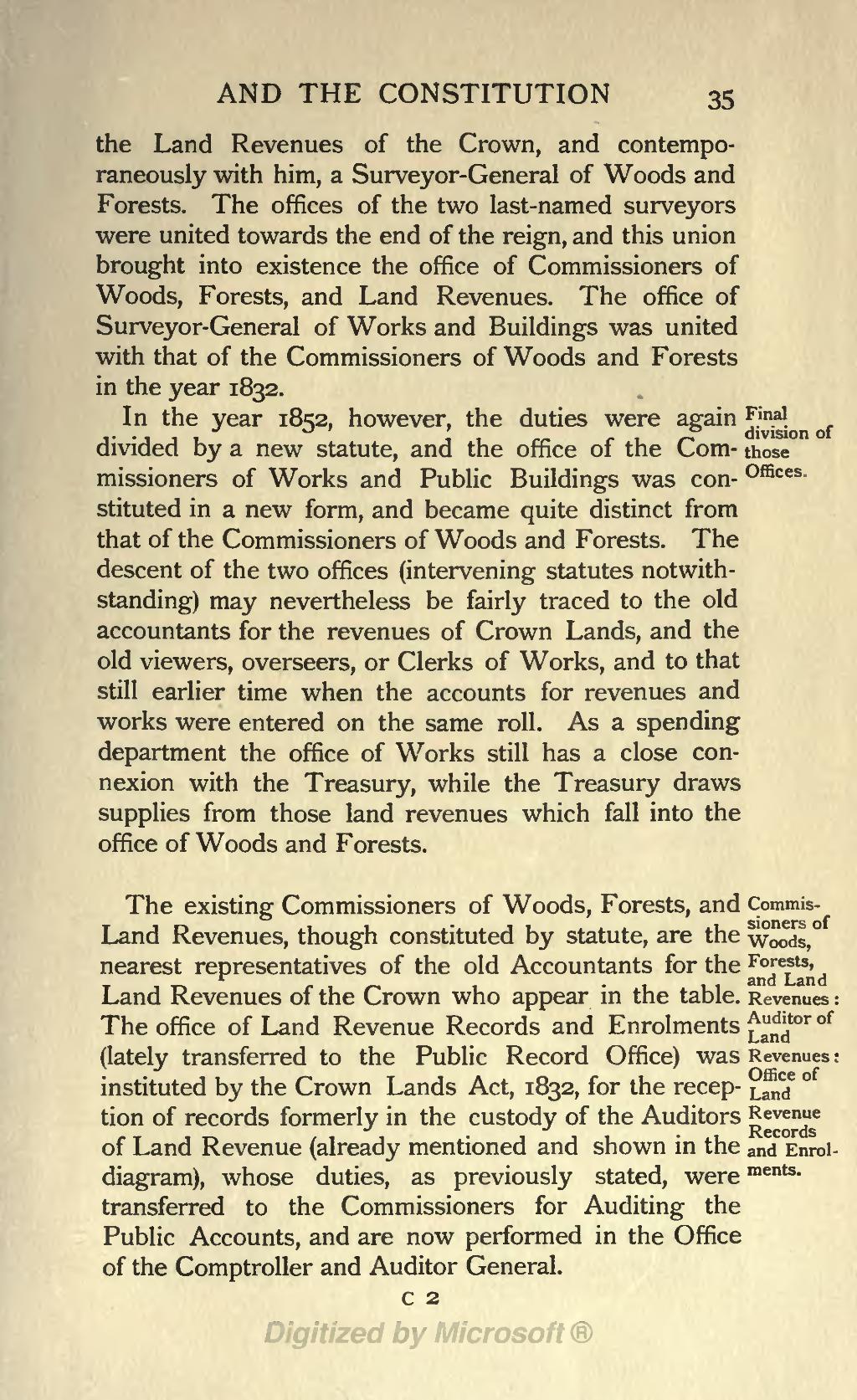the Land Revenues of the Crown, and contemporaneously with him, a Surveyor-General of Woods and Forests. The offices of the two last-named surveyors were united towards the end of the reign, and this union brought into existence the office of Commissioners of Woods, Forests, and Land Revenues. The office of Surveyor-General of Works and Buildings was united with that of the Commissioners of Woods and Forests in the year 1832.
Final division of those OfficesIn the year 1852, however, the duties were again divided by a new statute, and the office of the Commissioners of Works and Public Buildings was constituted in a new form, and became quite distinct from that of the Commissioners of Woods and Forests. The descent of the two offices (intervening statutes notwithstanding) may nevertheless be fairly traced to the old accountants for the revenues of Crown Lands, and the old viewers, overseers, or Clerks of Works, and to that still earlier time when the accounts for revenues and works were entered on the same roll. As a spending department the office of Works still has a close connexion with the Treasury, while the Treasury draws supplies from those land revenues which fall into the office of Woods and Forests.
Commissioners of Woods, Forests and Land Revenues: Auditor of Land Revenues:Office of Land Revenue Records and Enrolments The existing Commissioners of Woods, Forests, and Land Revenues, though constituted by statute, are the nearest representatives of the old Accountants for the Land Revenues of the Crown who appear in the table. The office of Land Revenue Records and Enrolments (lately transferred to the Public Record Office) was instituted by the Crown Lands Act, 1832, for the reception of records formerly in the custody of the Auditors of Land Revenue (already mentioned and shown in the diagram), whose duties, as previously stated, were transferred to the Commissioners for Auditing the Public Accounts, and are now performed in the Office of the Comptroller and Auditor General.
